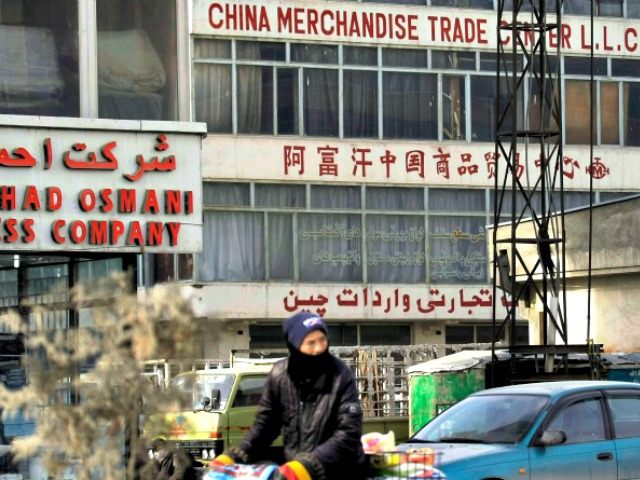There is much debate over the negative effects of massive trade deficits, and what the best strategy for correcting them might be, but it’s hard to deny the U.S. trade deficit with China is staggering in scale … and it got that way after just a few decades of old-school “free trade” orthodoxy.
Raul Amoros of HowMuch.net puts the issue in perspective:
The start couldn’t be more balanced: in 1985, the U.S. exported $3.9 billion to China, and imported goods and services for the exact same amount. But by 2015, there was a staggering imbalance, to China’s advantage, of $365.7 billion – an all-time record, not just for U.S.-China trade, but for any bilateral trade, ever.
It’s not that U.S. exports to China haven’t increased. They have, and by a lot. America exported an impressive $116.2 billion into China last year, 30 times more than in 1985. That makes China the U.S.’s third-biggest export market, nearly twice as important as Japan ($62.5 billion), in fourth place. But that’s still a lot less than U.S. exports to Canada ($280.3 billion) or Mexico ($236.4 billion). Meanwhile, Chinese exports to the U.S. have exploded. In 2015, China exported $481.9 billion to the U.S. – an amazing 123 times more than in 1985.
Amoros illustrated this with an animated GIF that shows billion-dollar blocks building into towers of trade for the U.S. and China. The American side of the graph rolls in and out like the tide a few times, while the Chinese tower climbs relentlessly upward to four times the American size.
As Amoros puts it, U.S. trade grows in “fits and starts,” while Chinese trade shows a “strong and consistent rise.” The best news he can give America is that at least the Chinese trade deficit is no longer growing exponentially larger.
Actually, he’s got a little more good news later in his analysis, but it leaves a somewhat bitter aftertaste. In Amoros’ judgment, one of the major reasons for the huge trade deficit is that “China’s economy may be huge, but on a per-capita basis, the Chinese themselves are still relatively poor.”
That means few Chinese workers can “afford all those nice expensive things made in America, by workers who make a lot more than they do.” That situation could change as China grows richer, and its per capital income increases… precisely because it’s beating the pants off the U.S. in trade, due to the far lower cost of Chinese labor.
By subscribing, you agree to our terms of use & privacy policy. You will receive email marketing messages from Breitbart News Network to the email you provide. You may unsubscribe at any time.
Meanwhile, Americans are encouraged to enjoy the benefits of cheap consumer goods produced by that inexpensive foreign labor – the nearly universal response to criticism of trade deficits, accompanied by the warning that any sort of tariff or “trade war” would “ultimately end up hurting U.S. workers and consumers,” as Amoros puts it.
Economic issues are always a matter of scale, so the general proposition that trade deficits benefit the American consumer might become a bit harder to defend in the shadow of a $365 billion imbalance.
Economic discussions must also factor in the element of time, and it’s not entirely heartening to think our immense deficit will level itself out years or decades in the future… at which point we lose all those cheap consumer goods, and we’ve permanently lost a huge number of jobs to foreign competitors. If the shot-callers of 1985 had seen what the next 30 years would bring, would they have considered the trade-offs a good deal, and made the same policy choices?
We may also wonder if hitching so much of our economy to potentially unstable foreign systems, whose labor policies would be considered illegally abusive in the United States, is either wise or moral.
Cheaper retail prices have certainly affected both government policy and business decisions in the United States. We can all agree that when everything costs less, each dollar is worth more. But what happens when forces beyond our borders, beyond our control, begin eating away at that spreadsheet wealth by removing the advantage of low prices?
Are we comfortable with getting those prices by doing business with countries where the life of the average worker includes poverty, and diminished liberty, beyond the worst nightmares of American labor advocates – who currently insist that asking the most inexperienced domestic hire to perform the simplest entry-level task, without paying at least $15 an hour plus government-mandated benefits, is tantamount to a human-rights violation?
It shouldn’t be surprising that trade negotiations with governments that have no such concern for their citizens are lopsided against U.S. negotiators. The very conventional wisdom that suggests we’d automatically lose any sort of “trade war,” with virtually any of our economic adversaries, inherently concedes that all the leverage is stacked against us, and the process is more akin to appeasement than bilateral negotiation. The side that believes itself hopelessly outmatched in war is not likely to drive a hard bargain, unless its negotiators are exceptionally bold and clever.
Somewhere between doomsday exchanges of protectionist artillery, and monster trade bills that read more like surrender documents, there must be a better way – a path that might sacrifice a little short-term consumer sugar for a healthier long-term diet of American job growth, and set aside the desires of powerful international constituencies to look at what the American people really need.
It’s difficult to applaud thirty years of trade policy that eroded American employment, while enriching the nation that is currently installing missile batteries in the formerly free waters of the South China Sea, and telling the world to prepare for the rise of a new hyper-power, as the old one collapses into an exhausted welfare-state heap.

COMMENTS
Please let us know if you're having issues with commenting.